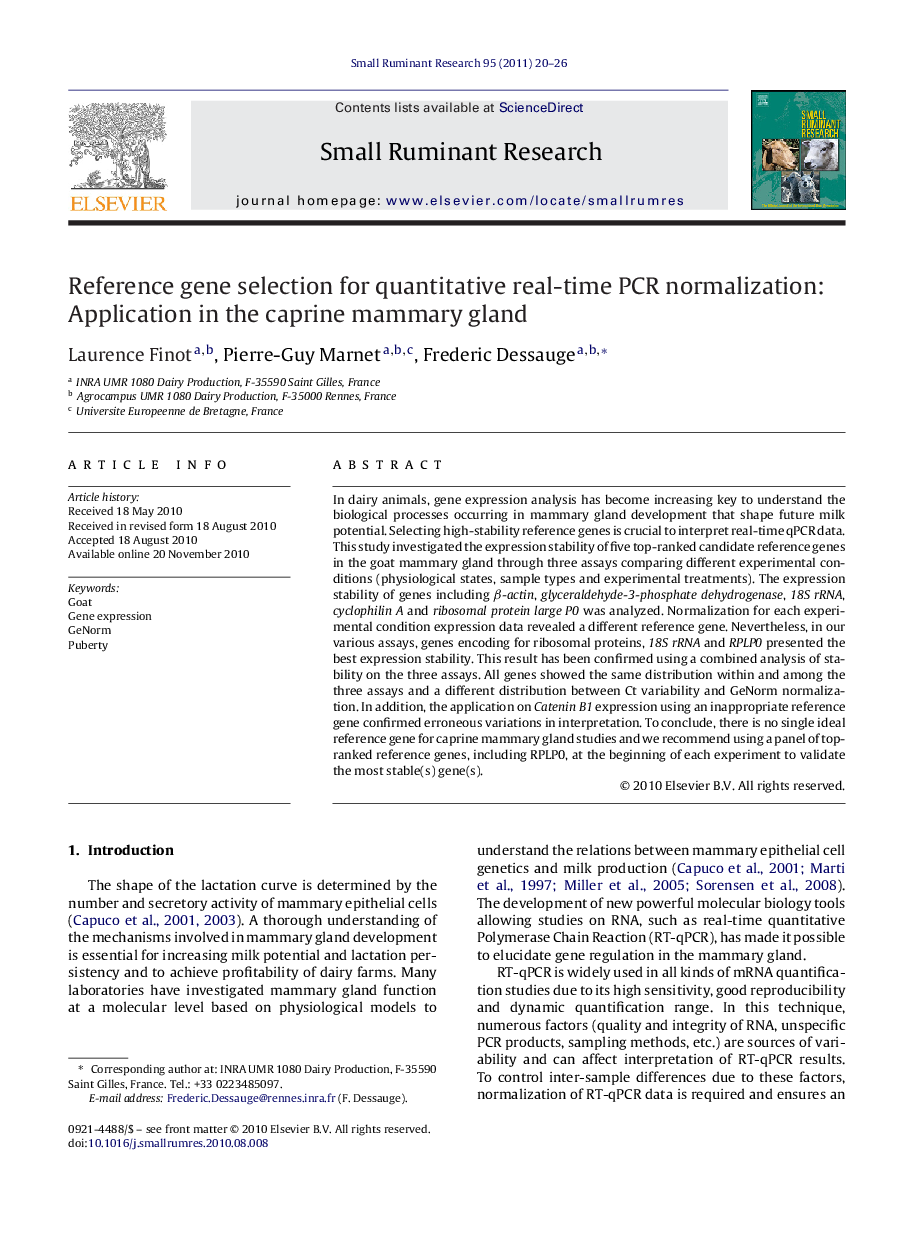| Article ID | Journal | Published Year | Pages | File Type |
|---|---|---|---|---|
| 2457525 | Small Ruminant Research | 2011 | 7 Pages |
In dairy animals, gene expression analysis has become increasing key to understand the biological processes occurring in mammary gland development that shape future milk potential. Selecting high-stability reference genes is crucial to interpret real-time qPCR data. This study investigated the expression stability of five top-ranked candidate reference genes in the goat mammary gland through three assays comparing different experimental conditions (physiological states, sample types and experimental treatments). The expression stability of genes including β-actin, glyceraldehyde-3-phosphate dehydrogenase, 18S rRNA, cyclophilin A and ribosomal protein large P0 was analyzed. Normalization for each experimental condition expression data revealed a different reference gene. Nevertheless, in our various assays, genes encoding for ribosomal proteins, 18S rRNA and RPLP0 presented the best expression stability. This result has been confirmed using a combined analysis of stability on the three assays. All genes showed the same distribution within and among the three assays and a different distribution between Ct variability and GeNorm normalization. In addition, the application on Catenin B1 expression using an inappropriate reference gene confirmed erroneous variations in interpretation. To conclude, there is no single ideal reference gene for caprine mammary gland studies and we recommend using a panel of top-ranked reference genes, including RPLP0, at the beginning of each experiment to validate the most stable(s) gene(s).
